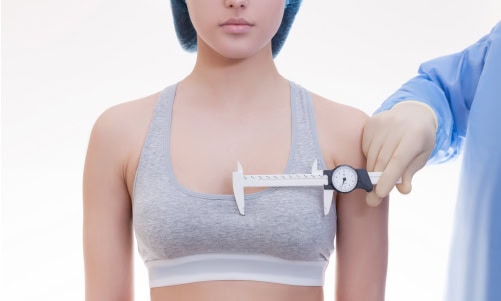Breast augmentation, a surgical procedure aimed at enhancing the size and shape of the breasts, addresses concerns like asymmetry, volume loss post-pregnancy, and reconstructive needs following mastectomy or trauma.
If you're considering a breast augmentation, reach out to us, or book a direct appointment with our plastic surgeon. At the CK Birla Hospital, we are dedicated to ensuring that your breast augmentation is as safe, comfortable, and effective as possible. We're here to guide you every step of the way toward a successful recovery.

Delaying breast augmentation may not pose immediate health risks but considerations include:
Consulting a qualified plastic surgeon is crucial to discuss goals, timelines, and potential risks associated with delaying the procedure.
Breast augmentation or enlargement offers two primary methods: implants or fat transfer. Each method has various options to achieve the desired aesthetics and feel. Here’s an overview:
Breast Implants
Fat Transfer Augmentation
Before choosing, thorough research and consultation with a certified plastic surgeon are crucial for informed decisions.
The cost of breast augmentation varies as per the specific type advised by a healthcare provider, such as:
The cost can also vary widely depending on several factors, including the location, the extent of the procedure, the surgeon’s experience, and the hospital’s pricing structure.
To get an explicit estimate for the cost of breast augmentation at the CK Birla Hospital, contact the hospital directly. Additionally, you can consult with our board-certified plastic surgeon to discuss your specific needs and receive a personalised quote for the procedure.
Before breast augmentation, a thorough evaluation is conducted, which includes:
Based on this evaluation, the surgeon advises on the procedure’s suitability, crafting a tailored treatment plan if the patient opts for surgery.
Breast implants typically last 10-20 years, but they may need to be replaced earlier due to complications or changes in the body. It’s crucial to follow up with a healthcare professional and monitor regularly.
Saline breast implants are filled with sterile salt water, while silicone implants are filled with silicone gel. Silicone implants tend to feel more natural, but both types have different risks and benefits.
Choose the right breast implant size by consulting with a plastic surgeon, considering your body proportions, desired outcome, and lifestyle. Trying on sizers and viewing before-and-after photos can help.
Yes, many women can breastfeed after getting breast implants, though some may experience reduced milk production. Implant placement and surgical technique can influence breastfeeding success. Consult your surgeon for guidance.